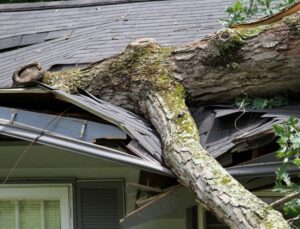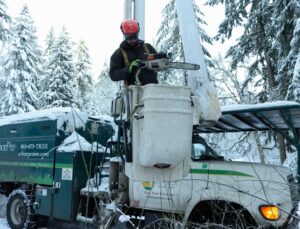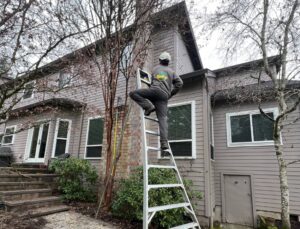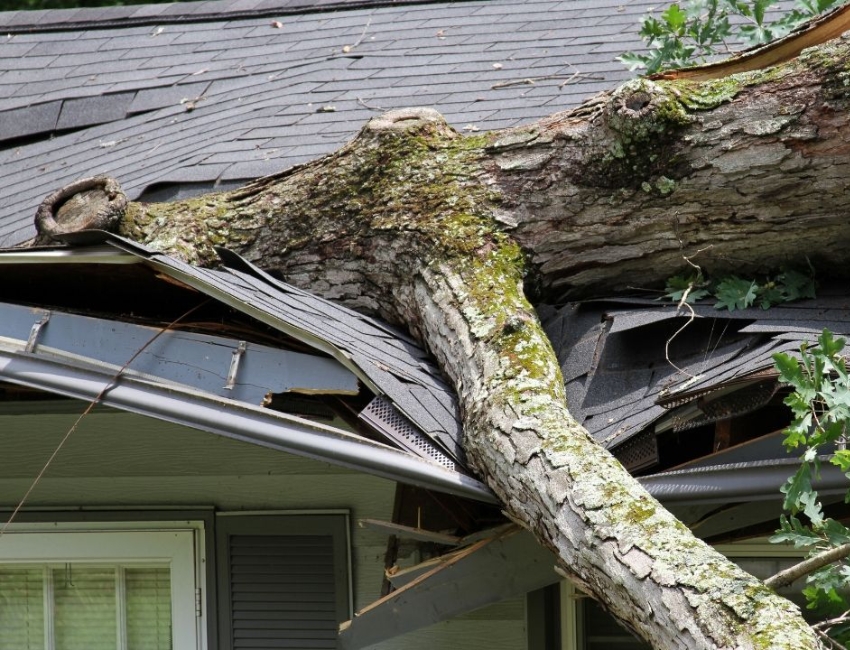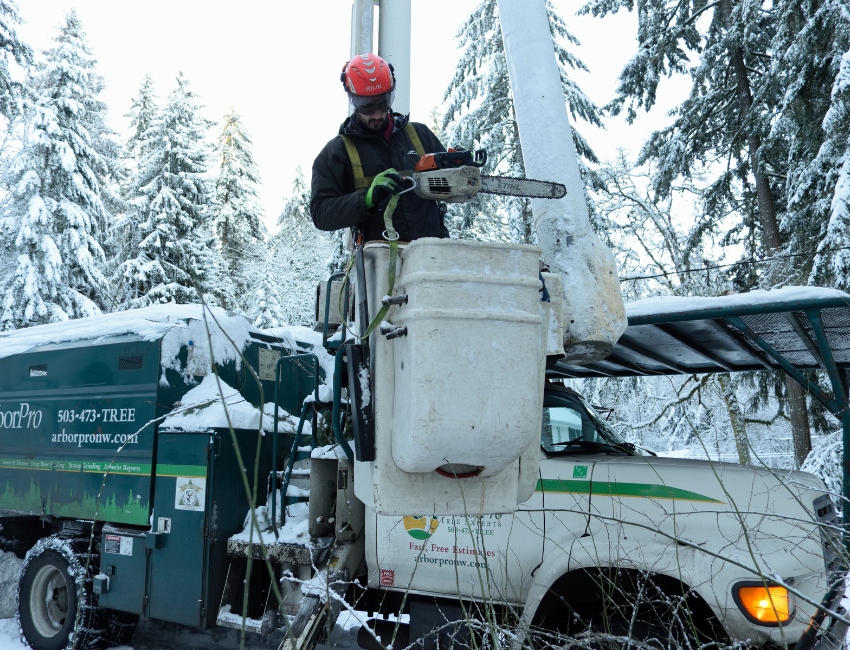7 Signs It’s Time for Tree Removal in Portland

Trees are a cherished part of Portland’s landscape, offering shade in summer and beauty year-round. While mature trees play an important role in our city’s charm, there are times when removing a tree becomes necessary for safety and aesthetics.
As a property owner, it’s important to know when to consider tree removal. This guide will help you identify seven key signs that indicate it might be time to say goodbye to a tree on your property. By understanding these signs, you can make informed decisions about your trees and ensure the safety of your home and loved ones.
1. Leaning Trees
A tree that leans significantly often raises red flags. While some trees naturally grow at an angle, a sudden lean or one that worsens over time can signal underlying problems. Portland’s soil conditions and frequent rain can contribute to tree instability, especially in low-lying areas of your yard.
Several factors can cause a tree to develop a sudden lean:
- Root damage or decay
- Standing water
- Soil erosion
- Storm damage
Keep in mind that a leaning tree doesn’t always require immediate removal. In some cases, a tree with a natural lean is perfectly fine. Other times, tree preservation services, such as cabling or bracing, can help stabilize it. For peace of mind, have a certified arborist check your leaning tree today.
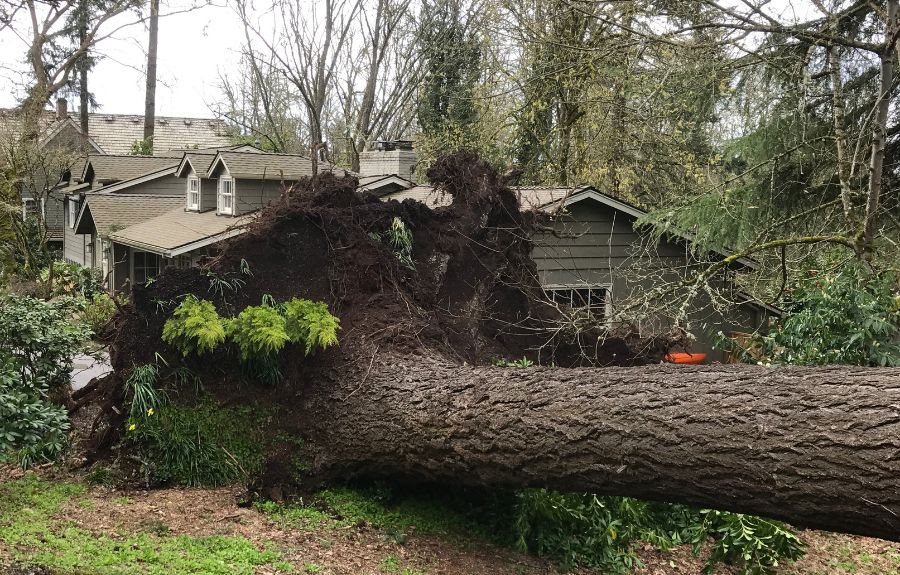
2. Storm Damaged Trees
Portland is no stranger to severe weather, which can take a toll on our trees. After a storm, it’s important to check your trees for signs of damage. Storm-damaged trees can pose significant risks to your property and safety.
Keep an eye out for these storm-related issues:
- Cracked or Split Trunks: Large cracks or splits in the main trunk can compromise the tree’s structural integrity.
- Broken or Fallen Major Branches: Losing large branches can throw off the tree’s balance and create entry points for decay.
- Uprooted or Heaving Roots: If you see soil lifting around the base of the tree, it might be at risk of falling.
- Multiple Branch Losses: A tree that’s lost many branches may struggle to recover.
- Lightning Strikes: Oregon is no stranger to lightning storms. These can often cause internal damage that may not be immediately visible.
While some storm damage can be addressed (and even prevented) through strategic pruning, severe damage often calls for removal.
3. Fungus, Decay, or a Hollow Trunk
The presence of fungus, visible decay, or a hollow trunk are all red flags that your tree’s structural integrity is compromised. These issues often indicate internal rot, which can severely weaken the tree’s structure.
Watch out for these signs:
- Mushrooms or conks growing on the trunk or roots
- Soft, crumbly, or missing bark
- Cavities or holes in the trunk
- A hollow sound when you tap the trunk
Decay is a natural process in old trees, but it can make them dangerous in urban settings. A decaying tree is more likely to drop branches or fall during storms. If the decaying area is quite small, a tree can often compartmentalize it, preventing the decay from spreading. However, if decay affects a large portion of the trunk, tree removal is usually recommended.
4. Dead or Dying Trees
A dead or dying tree not only lacks the beauty and environmental benefits of a healthy tree but also poses significant safety risks. Dead trees become brittle and unpredictable, making them hazardous during storms or high winds.
Look for these signs that a tree may be dead or dying:
- No leaves during the growing season
- Brown and brittle leaves that don’t fall off in autumn
- Bark that’s falling off or missing
- Cracks or holes in the trunk
- Signs of root damage
It’s best to remove dead or dying trees promptly to avoid potential safety hazards or costly damage to homes or other property.
5. Root Problems
Healthy roots are the foundation of a tree’s health and stability. Roots need good soil and the right amount water to take up nutrients and nourish the entire tree.
Root problems can develop for a number of reasons, including construction damage, soil compaction, or disease. Keep an eye out for these signs of root issues:
- Visible roots that are decayed or damaged
- Mushrooms or other fungi growing around the base of the tree
- Soil heaving or cracking near the tree
- Thinning canopy or branch dieback
- A tree that developed a sudden lean
Root problems are particularly concerning because they’re often not visible until significant damage has occurred. In urban areas like Portland, where space is limited and soil can be compacted, root problems are common. If root damage is extensive, removal may be necessary to prevent the tree from falling.
6. Pest Infestation & Fungal Infections
While many pest and fungal issues can be treated, severe infestations or infections may warrant tree removal. This is especially true if the problem threatens to spread to other trees.
Common pests and diseases in Portland include:
- Dutch Elm Disease
- Pine Bark Beetles
- Anthracnose
- Root Rot Fungi
Look out for these signs of infestation or infection:
- Discolored or distorted leaves
- Holes in bark or leaves
- Oozing sap
- Sawdust around the base of the tree
- Premature leaf drop
Early detection and treatment can often save a tree. However, if more than 50% of the tree is affected, or if the structural integrity is compromised, removal might be the best option to protect nearby trees of the same species.
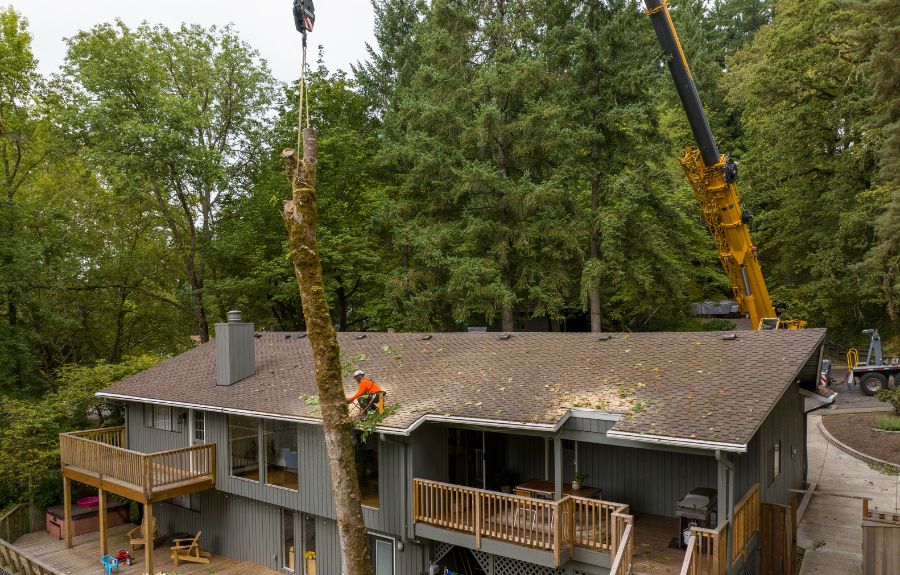
7. Poor Locations
Sometimes, a tree’s location can be a problem, even if the tree itself is healthy. Trees planted too close to structures, power lines, or other trees can create hazards or nuisances.
Consider removal if your tree is:
- Growing into primary power lines
- Too close to your home
- Blocking important views or signage
- Interfering with other trees’ growth
- Causing excessive shade that prevents other plants from growing
In Portland, where space can be at a premium, poorly placed trees are a common issue. While it’s always sad to remove a healthy tree, sometimes it’s necessary for safety or to allow better-placed trees to thrive.
Large trees growing too close to homes can damage siding or windows. During storms, falling branches can cause costly damage. These trees can also encourage pests to enter your home.
Additionally, trees planted in unsuitable conditions often face ongoing stress. These trees may require constant maintenance and still fail to thrive. In such cases, removal might be the best option. This allows you to replant with a species better suited to your specific soil, light, moisture, and climate conditions, ensuring a healthier and more sustainable urban forest in the long run.
The Benefits of Timely Tree Removal
While deciding to remove a tree is never easy, timely removal, when necessary, can provide several benefits:
- Safety: Removing hazardous trees reduces the risk of property damage and personal injury.
- Improved Curb Appeal: Removing dead or dying trees can enhance your landscape’s overall appearance.
- Better Growing Conditions: Removing problematic trees can allow other plants and trees to thrive.
- Cost Savings: Early removal can prevent more expensive property damage or emergency removal later.
- Environmental Responsibility: Removing diseased or infested trees can protect the health of other trees in your yard or neighborhood.
When to Contact a Professional Arborist
While this guide can help you identify potential issues, it’s always best to consult with a professional arborist before making a final decision about tree removal. An arborist can:
- Accurately assess the tree’s health and structural integrity
- Identify any diseases or pest infestations
- Provide treatment options if removal isn’t necessary (at Arbor Pro, our goal is saving trees)
- Ensure safe and efficient removal if it is needed
- Navigate local regulations regarding tree removal in Portland
Remember, tree removal can be dangerous and should only be attempted by trained professionals. DIY removal can lead to property damage, injuries, or even fatalities.
Protecting Your Portland Property
Recognizing when a tree needs removal is key to maintaining a safe and beautiful Portland landscape. By watching for these seven signs, you can make informed decisions about your trees. When in doubt, always consult a professional arborist. They can provide expert advice and ensure safe, regulation-compliant removals.
At Arbor Pro, our experienced team is ready to help you make the best choices for your property, whether that’s removal or another solution. Call us at 503-473-8733 to request a tree removal quote today.


